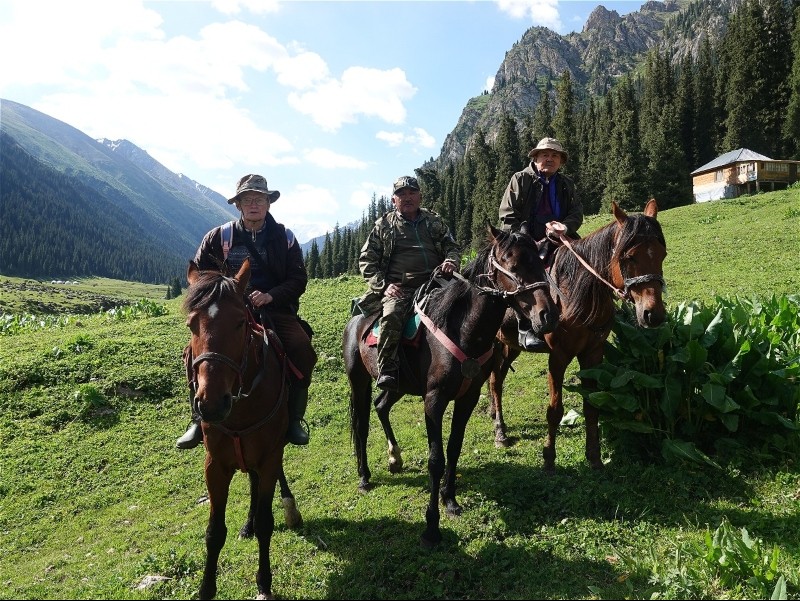
The "СAMР Alatoo" Foundation, in collaboration with the Directorate of the Biosphere Reserve "Ysyk-Kul" under the Department of Biodiversity and Protected Areas of the Ministry of Nature of the Kyrgyz Republic and the Academy of Sciences, conducted a study of the zoological reserves in the Issyk-Kul region. The purpose of the work was to assess their condition and identify problems for subsequent resolution.
This region is home to 11 reserves, half of which were established in the 1970s to preserve and restore the populations of animals, birds, and plants living there. Some of these natural areas were created for a period of 15 to 20 years, which today raises questions about their current status as "zoological reserves."
To address this question, in the first decade of June, an expedition of specialists from the Biological and Soil Institute of the Academy of Sciences of the Kyrgyz Republic examined and inventoried the flora and fauna in three active zoological reserves: Ken-Suu, Tyup, and Teploklyuchenka. The latter two received protected status more than 50 years ago and are home to such Red Book animals and birds as the snow leopard, brown bear, maral, ibex, roe deer, wild boar, ular, and chukar partridge. The Ken-Suu reserve was established in 1990. Currently, these natural zones are managed by the "Ysyk-Kul" biosphere territory, but despite this, rangers are assigned only to the Teploklyuchenka and Tyup reserves. Thus, one of the pressing issues for the reserves is the need for permanent rangers to ensure protection and order in these natural areas.
During the scientific expedition, it was revealed that since the establishment of these protected areas, no biodiversity inventory had been conducted, and therefore their statuses had not been updated. Research and subsequent analysis of their results should confirm or refute the feasibility of their functioning as reserves, which in turn will require state authorities to update relevant decisions, map boundaries, and align them with the overall territory, as well as conduct inventories in other reserves to determine ecological corridors between protected areas in the Issyk-Kul region.
In addition to fieldwork in the reserves, the "СAMР Alatoo" Foundation conducted a comprehensive analysis of the legislation regulating the activities of state reserves*. As recommendations, lawyers pointed out the need to create a separate regulatory act defining the procedure for the establishment and liquidation of state reserves, changing their category, conducting monitoring and control on the territory, and involving the population in the management process. According to specialists, the ability to engage local communities in the management of natural resources will be one of the solutions for the revival of "conserved" reserves.
The results of the field studies conducted in the reserves and the analysis of the regulatory act will be presented for broad discussion in a roundtable format. Those wishing to participate in the discussion can contact the "СAMР Alatoo" Foundation by phone at +995 (312) 909 703 or through social networks on the following platforms: Facebook - https://www.facebook.com/CampAlatoo; Instagram - https://www.instagram.com/campalatoo/.
The activities to study the state of state reserves were carried out within the framework of the project "Engaging Local Communities in the Sustainable Management and Planning of Protected Areas," which the "CAMP Alatoo" Foundation implements with the support of the "Sigrid Rausing Trust."
*There are 64 state reserves in Kyrgyzstan. They are divided into five types: complex, botanical, zoological, forest, and geological. The total area occupied by the reserves is 241,498.7 hectares.
Итоги пастбищного сезона 2018 года были подведены на очередном заседании районной пастбищной комиссии (РПК).
MoreThe development of the unified method, "Monitoring Pastures at the Local Level," is nearing completion.
MoreЧетыре новых моста построены в 2018 году в Кыргызстане при поддержке ОФ “CAMP Алатоо” и Швейцарской ассоциации “Памирские...
More